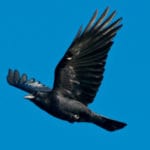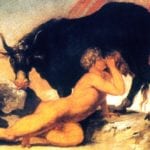 Weird Stuff
Weird Stuff  Weird Stuff
Weird Stuff  Politics
Politics 10 Political Scandals That Sent Crowds Into the Streets
 Weird Stuff
Weird Stuff Ten Bizarre Facts About The Doge Meme
 Our World
Our World 10 Ways Your Christmas Tree Is More Lit Than You Think
 Movies and TV
Movies and TV The 10 Coolest Stars to Set Sail on The Love Boat
 History
History 10 Things You Didn’t Know About the American National Anthem
 Technology
Technology Top 10 Everyday Tech Buzzwords That Hide a Darker Past
 Humans
Humans 10 Everyday Human Behaviors That Are Actually Survival Instincts
 Animals
Animals 10 Animals That Humiliated and Harmed Historical Leaders
 History
History 10 Most Influential Protests in Modern History
 Weird Stuff
Weird Stuff 10 Funny Ways That Researchers Overthink Christmas
 Politics
Politics 10 Political Scandals That Sent Crowds Into the Streets
 Weird Stuff
Weird Stuff Ten Bizarre Facts About The Doge Meme
Who's Behind Listverse?

Jamie Frater
Head Editor
Jamie founded Listverse due to an insatiable desire to share fascinating, obscure, and bizarre facts. He has been a guest speaker on numerous national radio and television stations and is a five time published author.
More About Us Our World
Our World 10 Ways Your Christmas Tree Is More Lit Than You Think
 Movies and TV
Movies and TV The 10 Coolest Stars to Set Sail on The Love Boat
 History
History 10 Things You Didn’t Know About the American National Anthem
 Technology
Technology Top 10 Everyday Tech Buzzwords That Hide a Darker Past
 Humans
Humans 10 Everyday Human Behaviors That Are Actually Survival Instincts
 Animals
Animals 10 Animals That Humiliated and Harmed Historical Leaders
 History
History 10 Most Influential Protests in Modern History
10 Crows And Ravens From World Religion
Crows and ravens have been mentioned in scripture, holy texts, and mythology for centuries. Incredibly intelligent birds, they’re often portrayed as mischievous tricksters, but they’re also often associated with death and the transition to the afterlife. Perhaps most popular is the depiction of the ravens often seen in the company of (or representing) the Morrigan—the Celtic goddess of war and death. But that’s only one incarnation of the raven in the world’s religions. (For those who aren’t sure of the difference between a crow and a raven, we’ve broken it down for you here.)
10Raum
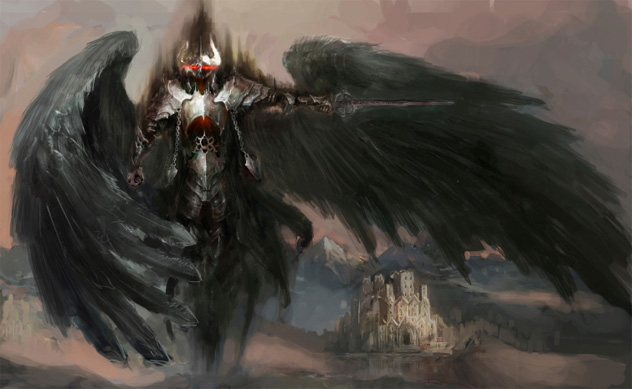
The Lesser Key of Solomon: Goetia, The Book of Evil Spirits is a book on ceremonial magic compiled in several different versions, many of which surfaced in the 1700s. The book details a list of demons that can be summoned from the netherworld and tells not only how to summon them, but exactly what forms each demon takes and what their characteristics and abilities are. In the beginning of the version compiled by Dr. L.W. de Laurence, there’s a warning that anyone wanting to summon demons shouldn’t go about it lightly—and only take the word and practice of Dr. L.W. de Laurence, as any others ripping off the text clearly don’t know what they’re doing.
There are a couple different demons that are said to take on the form of a crow or a raven before being ordered into human form by their summoner. Stolas, the 36th demon in the pantheon, will first appear as a raven when summoned. Once he becomes a man, he teaches the arts and astronomy, as well as the properties of precious stones and the healing properties of herbs. Malphas, the 39th demon, appears as a crow and won’t change form until ordered. In his human form, he can build homes and fortifications and can give his summoner a familiar.
The 40th in the line of demons, Raum, also takes the form of a crow. Perhaps convenient to his crow form, he can steal valuables from the most protected of places. He is also said to be the destroyer of cities and dignities, he can reveal anything about the past, present, and future, and he can unite enemies.
9St. Vincent’s Ravens
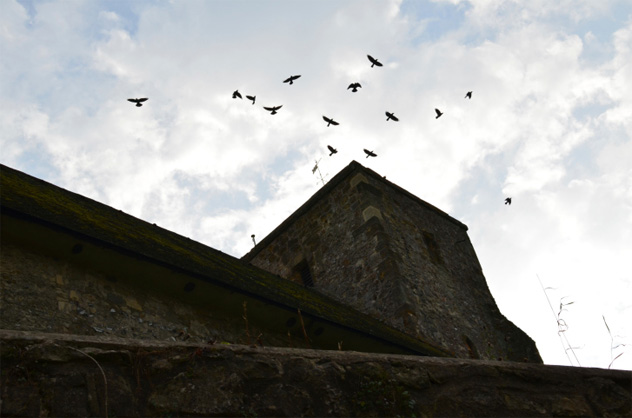
Ravens are often connected with holy figures as well as the demonic. St. Vincent has a raven as one of his symbols in addition to the cross and fire. Like many Catholic saints, St. Vincent’s end was a bloody one. He served under the Bishop of Saragossa in Spain, and when the Roman Emperor Diocletian brought his condemnation of the Christians to Spain, it was Vincent who acted as the spokesperson for the bishop and for the Church. After he was imprisoned, tortured, and then imprisoned again, his faith began encouraging others around him to convert to Christianity—quite the opposite of what the Romans intended.
Not surprisingly, the emperor was less than thrilled about this. He put the still-living Vincent on display as a warning, which also failed. Vincent died while still in prison on January 22, 304, and his body was thrown into a bog where it was meant to be food for scavengers. A raven landed near the body, though, and chased away any animal that got too close. The body was then thrown into the ocean, but washed up several days later, at which point it was recovered by his followers and given a proper burial. Later, in 1173, St. Vincent’s bones were taken to Lisbon after the city declared him its patron saint. It was said that a group of ravens escorted his bones to Lisbon Cathedral, and for nearly 800 years, the descendents of those ravens lived at the cathedral. Unfortunately, the last of St. Vincent’s ravens died in 1978.
8Apollo’s Once-White Raven
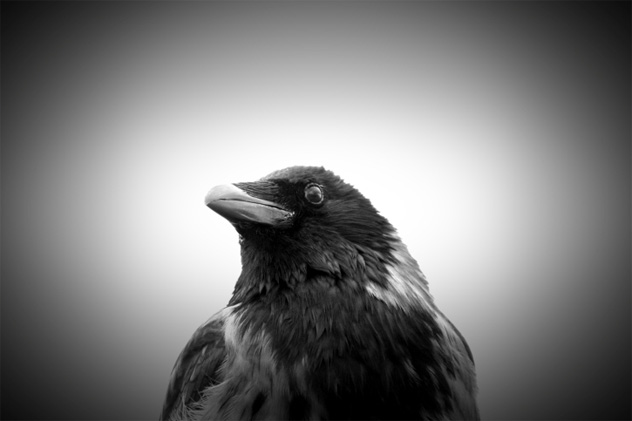
In Greek mythology, the raven was one of the familiars of Apollo. Originally, the bird was white, though, and his feathers were charred into blackness by the god in a jealous fit of rage. The story went like this: Apollo loved a mortal princess named Koronis, choosing her to bear him a son (who would be Asklepios, the god of medicine). While she was pregnant, though, Koronis made the rather bad decision to cheat on the god with a mortal man. Apollo’s raven familiar saw them and reported the betrayal to his master.
Apollo turned to his twin sister, Artemis, for a little revenge. Artemis killed the princess (and an indeterminate number of her associates), and Apollo saved his child by wading into her funeral pyre and pulling out the child. He ordered his son to be raised by the centaur Cherion, and in his rage and grief over what had been done, he burned the feathers of his beloved raven to black for telling him of his beloved’s infidelity.
7How The Raven Stole The Sunlight

According to the mythology of the Haida people of the Pacific Northwest, Raven is the embodiment of the mischievous trickster. True to the natural personality of the raven, their mythological Raven is the one who created the world—not by physical creation, but in more of an accidental, meddling sort of way. According to the story, the world originally existed in complete and total darkness. It was occupied by Raven, who didn’t approve of the darkness because it made finding things harder for him. Also in the world were an old man and his daughter. During the course of his wanderings one day, Raven overheard the old man talking to himself about a box he possessed. The box contained a series of ever-smaller boxes, and inside the smallest box was all the light in the world—which Raven decided to steal.
There seemed to be no door into the house, so Raven waited until the man’s daughter went to a nearby stream, then changed himself into a hemlock needle in the water, which the girl drank. Raven changed himself into a baby once he was inside her, and once he was born (an odd-looking half-bird, half-boy creature whose true nature was hidden by the darkness), he demanded to be allowed to play with the boxes. One by one, Raven demanded the first box, then the second, and so on. Finally, he convinced his grandfather to open the innermost box and let him play with the ball that was the light. As soon as Raven had the light, he took off with it gripped in his beak.
The light spilled from the ball and over the world, but it wasn’t long before Eagle gave chase. As Raven fled, pieces of the light fell to the ground and shattered, bouncing back into the sky to create the Moon and the stars. Other pieces of the light slowly fell as Raven made his way around the world, which is why the light travels across the sky the way it does.
6Hugin And Munin
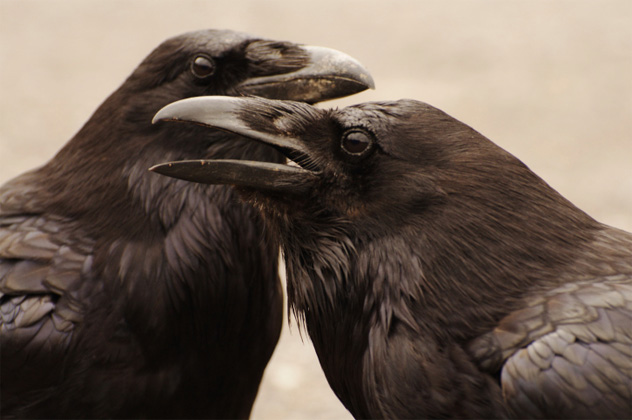
Hugin and Munin are the two raven familiars of the Norse god Odin. In addition to his pair of wolves, Geri and Freki, the ravens were sacred to Odin; much more than just sacred, though, they were his eyes and ears. Every morning, they would leave their positions on his shoulders and go out into the world, seeing everything, hearing everything, and speaking to everyone both living and dead. There was little that escaped their notice, and there was little that escaped Odin—every night, they would return to perch on his shoulders and tell him what they’d seen. They show up in a number of different stories, and, chances are, if Odin knows that something’s going on, it’s because they told him. That’s how he knew of the deed of the dwarfs.
When the dwarfs killed Kvasir, bleeding him dry in order to drink of his immense wisdom, Hugin and Munin were watching. They watched as the dwarfs brewed mead from three different pots containing his blood—one for amends, one for inspiration, and one for offering. Afterward, the dwarfs went into the world looking for more trouble and killed the giant Gilling and his wife. Gilling’s brother, bent on revenge, seized the dwarfs, who promised him the mead brewed from blood as payment for his brother’s life. The mead was handed over to the giant, who gave the bowls to his daughter to safeguard, not knowing that the ravens had seen it all and that Odin knew where the blood of the god-born Kvasir was being kept.
5Yatagarasu
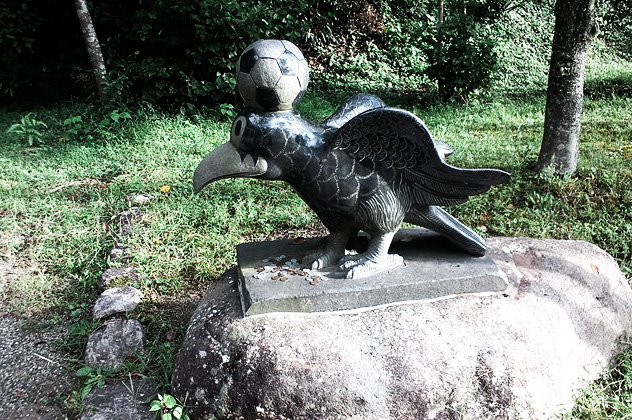
Yatagarasu is the three-legged crow of Japanese mythology and the symbol of Kumano. According to legend, Yatagarasu served as guide to Japan’s first emperor, Jimmu, whom the crow guided across the mountains in his quest to claim his lands. The crow was possibly depicted as three-legged because three was the number of the Sun, but it’s unknown as to just why Yatagarasu had three legs.
Theories suggest that the three legs represent the three ancient clans of Japan or the three virtues of valor, benevolence, and wisdom. Some suggest that the three stands for mankind, heaven, and Earth. Regardless of why Yatagarasu has three legs, he’s seen as symbolic of the navigator, physical and spiritual, and he’s even been adopted by the Japanese soccer association in the hopes that he’ll help navigate the ball into the goal. He’s also closely associated with Kumano, the birthplace of the founder of the sport in Japan.
4Kutkh, The Raven God
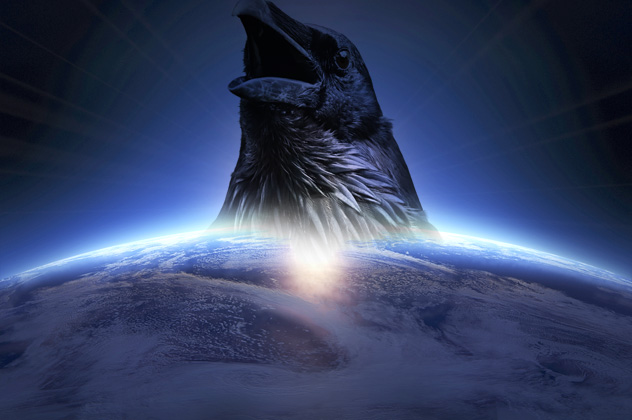
The Koryaks are a group of indigenous people who live on the highly volcanic Russian peninsula of Kamchatka. Central to their mythology—and included in some way in almost every myth—is Kutkh, the Great Raven and creator of everything. According to the story, the peninsula itself was created when a feather fell from Kutkh and into the water, creating the land. He created men, but only one woman; all the men loved the same woman, and as they died, they were turned to mountains. Because of their overwhelming love for the world’s woman, their hearts continued to burn after their deaths and the volcanoes (29 of the original 130 are still active today) were created.
Kutkh plays a supporting role in a number of other myths as well. For example, earthquakes happened when his sled dogs shook the snow from their fur and made the ground shake. The breathtaking natural pumice formations along the Ozernaya River are also said to be the work of the raven god: When he was done fishing in the river, he stood his boats on the shoreline and forgot about them; the boats became the pumice formations, which stand there even today, waiting for his return. The cliffs have become a sacred spot to many of the native groups living on the peninsula, and they’re off-limits to natives and visitors alike.
3Australia’s Aboriginal Crow
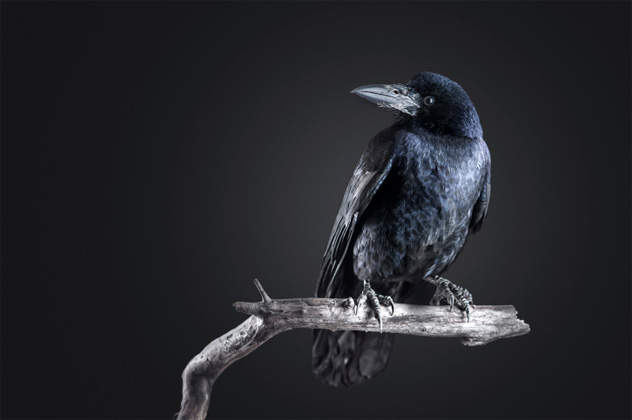
Crow is a highly respected part of Australian Aboriginal mythology, thought to be the ancestor of some and the savior of others. He’s something of a trickster figure, but some of his actions ultimately end up helping those he was trying to torment. His attempt at stabbing the swamp hawk with sharp, needle-like quills ended up giving the hawk spines on its feet that made hunting much easier, and he also gave the fire-tailed finches red spots on their tails when he hurled burning coals at them.
It was Crow that gave fire to humans. Fire originally only belonged to seven women, who refused to share it with anyone else. Tired of eating raw food, Crow hid snakes in a termite mound to scare the women into dropping fire when they went to dig for termite larva. When the women hit the attacking snakes, fire fell from their sticks and Crow grabbed it. At first, he was determined to keep the fire for himself, but once people realized he had it and yelled at him to share, he threw hot coals at them to try to get them to go away . . . giving them what they wanted and charring his feathers in the process.
Another story about how the crow was turned black comes from his greed. The originally white Crow and his companion, Eagle, were friends who would hunt together every day. They made a deal to share all their catches, but Crow cooked and ate his before returning to camp, then told Eagle that he hadn’t caught anything that day. Eagle knew that he was lying, and when he caught Crow in the act of eating and not sharing, he threw him into his own fire. From then on, Crow was never able to wash the ashes from his feathers.
2Athena’s Birds
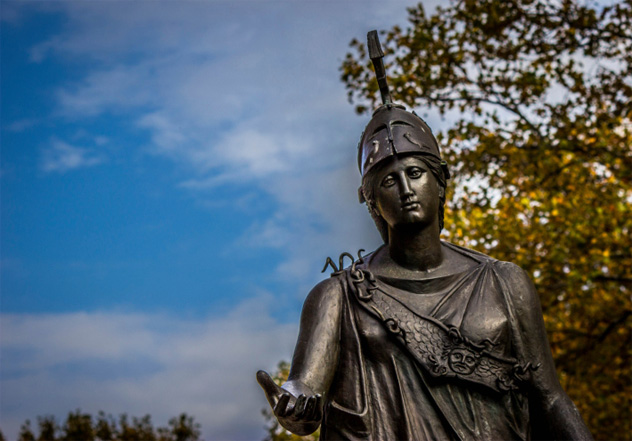
The Greek goddess Athena is most commonly depicted with an owl at her side, but for a time, the crow was her familiar. Koroneis, a princess of Phocis, was walking along the beach when she caught the attention of Poseidon. Not wanting to have anything to do with him, she appealed to Athena for help. Feathers sprouted from her skin and her arms turned to wings, allowing her to take flight and escape the pursuing god. She took her place at Athena’s side as her sinless, stainless companion, but anyone familiar with Greek mythology knows that only a few stories have a happy ending—and this isn’t one of them.
When Athena needed new armor and approached Hephaistos the smith, he fell in love with her. Although the relationship was rather one-sided, the two had a baby named Erikhthonios. In order to keep her son safe, Athena put him in a box and gave the box to Pandrosos. There are a couple different versions of the story: In one, the crow reveals the baby’s secret to its guardians. In another, it tells Athena that they’ve betrayed her and opened the box she forbade them to look in. Either way, Athena gets vengeance on her failed caretakers, and her crow is banished from her side as well. In a later story, the crow laments her loss of position to Nyctimene, whom Athena had turned into an owl to help her escape the grasp of her lecherous, incestuous father.
1Mithras And The Raven
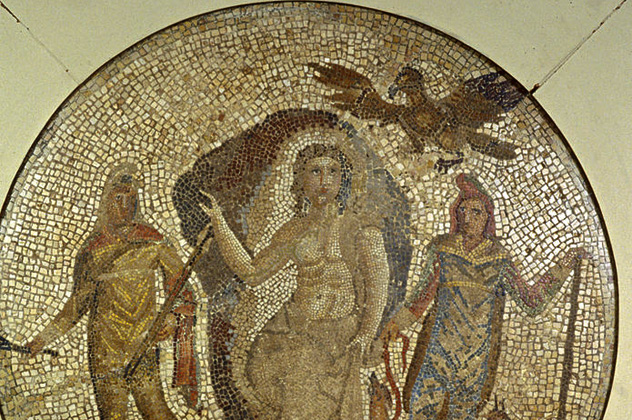
The cult of Mithras is one of the most widespread and mysterious of the world’s cults—they’re mentioned as far back as the writings of Plutarch, but we know relatively little about what actually went on in their rites and rituals. What we do know, however, is that the raven played an integral part in the cult’s mythos. Mithras is credited with killing the sacred bull and, in doing so, creating life from the different parts of the bull. In many depictions of the moment of killing and creation, a raven is perched on the bull’s back.
For those who were initiated into the cult of Mithras, there were several levels through which they could progress. The lowest level, whose members were little more than servers during ritual feats, was called Raven, or Corax. The idea of this entry-level position was linked to the raven’s role in nature as a scavenger—these new initiates into the cult were scavengers of the thoughts, ideas, and knowledge of others, and it was also the raven that acted as the messenger to Mithras, gathering information in the same way.
